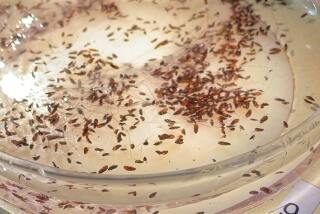INFECTIOUS DISEASES IN THE COUNTY : NUMBER OF CASES
- Share via
February Current Disease 1988 Year-to-Date Acquired Immune Deficiency Syndrome (AIDS) 31 42 Campylobacter 16 35 Gonococcal infections 260 473 Gonorrhea 189 301 Hepatitis A (infectious) 27 64 Hepatitis B (carrier) 43 57 Lead poisoning 63 133 Salmonellosis 27 55 Shigellosis 15 35 Streptococcal infection 295 467 Syphilis 113 153
Previous Disease Year-to-Date Acquired Immune Deficiency Syndrome (AIDS) 26 Campylobacter 53 Gonococcal infections 695 Gonorrhea 552 Hepatitis A (infectious) 39 Hepatitis B (carrier) 22 Lead poisoning -- Salmonellosis 37 Shigellosis 27 Streptococcal infection 706 Syphilis 134
Acquired immune deficiency syndrome (AIDS): a fatal infectious disease that attacks the body’s immune system, leaving a person vulnerable to a variety of life-threatening infections and tumors. AIDS is caused by the human immunodeficiency virus called HIV. The virus is transmitted by sexual contact, exposure to contaminated blood and from an infected mother to her new born.
Campylobacter: usually characterized by sudden, severe acute diarrhea, abdominal pain, fever and vomiting. Most often associated with foods poorly refrigerated or uncooked properly, unpasteurized milk and unchlorinated water.
Gonococcal infections: sexually transmitted bacterial diseases which differs in males and females in terms of course, severity and recognition. The most common are: Urethritis, inflammation of the urethra; Epididymitis, inflammation of that part of the semen-conducting duct which lies upon and behind the testicle; Proctitis, inflammation of membranes of the rectum; Cervicitis, inflammation of the neck of the uterus; Salpingitis, inflammation of one or both Fallopian tubes.
Gonorrhea: a sexually transmitted venereal disease produced by a sphere-shape bacteria, affecting genital mucous membranes of either sex.
Hepatitis A: an acute viral illness of worldwide distribution, occurring mostly in children and young adults. Usually transmitted by oral ingestion of infected material or by poor sanitation conditions.
Hepatitis B: an acute illness caused by Hepatitis B virus transmitted by exposure to contaminated needles and administration of blood or blood products and oral ingestion of contaminated material.
Lead poisoning: intoxication from absorption of lead or its salts into the body. Often occurs in young children who nibble on materials containing paint with a lead base. Common signs are abdominal pain, constipation, drowsiness, pallor, mental confusion and a blue line on gums.
Salmonellosis: a bacterial disease characterized by the sudden onset of a headache, abdominal pain, diarrhea, nausea, vomiting, dehydration and fever. Common cause of food poisoning.
Shigellosis: acute diarrhea acquired by person-to-person contact, through eating contaminated food or handling infected objects. Commonly known as bacillary dysentery.
Streptococcal infection: a sphere-shaped bacteria which grows like chains of little balls. Common cause of strep throat and scarlet fever.
Syphilis: a chronic venereal disease transmitted by sexual intercourse. The first symptom, a chancre, appears after an incubation period of 12 to 30 days, followed by a slight fever.
Sources: Orange County Public Health Department, “Reported Cases of Specified Notifiable Diseases,” for February 1988.
“Control of Communicable Diseases In Man,” Abram S. Benenson, editor, an official report of the American Public Health Assn., 1985, 4th edition; “Better Homes and Gardens Family Medical Guide,” Donald G. Cooley, editor, 1973, 2nd edition; “The Bantam Medical Dictionary,” prepared by Laurence Urdang Associates, Ltd., 1982; “Stedman’s Medical Dictionary,” Williams and Wilkins Company, 1973, 22nd edition.






